This guide will tell you everything you need to know about Gjirokaster and answer the question, “Is Gjirokaster worth visiting.” I explain how to get there, what to eat, and where to stay. But also what places you shouldn’t miss and the best things to do, even with children in tow, in Gjirokaster
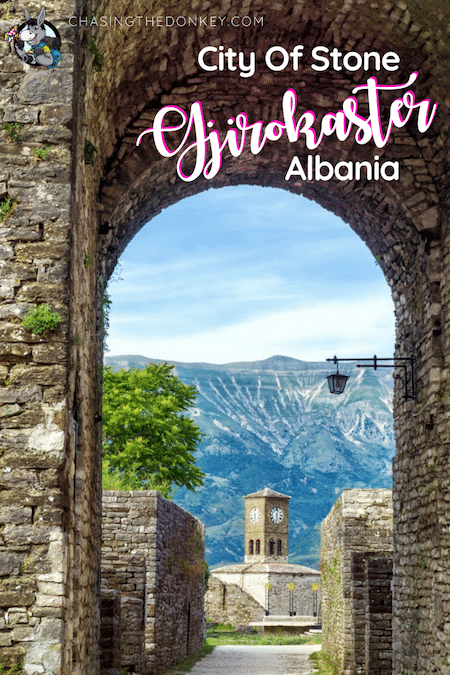
Skip Ahead To My Advice Here!
Should You Visit Gjirokaster Albania? Yes & Here Is Why
Gjirokaster is one place that we Albanians adore. The city of Gjirokastër is a cultural city within the Republic of Albania (Republika e Shqipërisë) described as a museum town or the “City of Stone” (or “Stone City”) due to its distinctive Ottoman-era architecture, which includes a wealth of buildings constructed with local stone, and its streets paved with cobblestones.
This is why I think it deserves the hype and a place you have to see in Albania:
A Walk Through UNESCO & Albanian History
Gjirokaster, also known as the “City of Stone,” isn’t just another dot on the map; it’s a living museum. This city grabs your attention with its UNESCO World Heritage tag, thanks to its well-kept Ottoman architecture. Imagine walking down cobbled streets lined with stone houses that look like they jumped right out of a history book. And don’t even get me started on Gjirokaster Castle. Perched on a hilltop, this fortress isn’t just for show. It’s packed with stories, offers killer views over the city, and houses a museum where you can brush up on your Albanian history.
Unique Architecture In The Old Town & Beyond
One word: wow. The houses here aren’t your typical modern buildings. They’re masterpieces of Ottoman design, complete with stone roofs, detailed woodwork, and those iconic wooden balconies. Take the Zekate House, for example. It’s like stepping into the 18th century without a time machine. These buildings are not just homes; they’re a peek into the past.
Balkans Culture Galore
Gjirokaster doesn’t hold back when it comes to showing off its culture. Have you ever heard of the National Folklore Festival? It’s this massive celebration of Albanian music, dance, and traditional costumes that takes place right in the castle. It’s your chance to see Albania’s cultural diversity up close and personal, and it only happens every five years, so it’s a big deal!
Let’s Talk Food
If you’re a foodie, Gjirokaster has got you sorted. The local cuisine is a mix of Albanian, Greek, and Turkish flavors. Have you ever tried qifqi? These rice balls are a Gjirokaster specialty, seasoned with mint, and definitely worth a taste. Or how about a slice of byrek? It’s this flaky, savory pie that’ll have you coming back for more.
Perfect Base for Exploration
Gjirokaster’s location is pretty strategic for travelers. It’s close to some of Albania’s top sights, like the stunning Blue Eye Spring and the ancient ruins of Butrint. So, it’s not just about the city itself; it’s also an excellent starting point for exploring southern Albania.
In short, Gjirokaster is the real deal. It’s a city that lets you step back in time, dive into Albanian culture, indulge in delicious food, and explore the surrounding area. It’s casual, it’s cool, and it definitely deserves a spot on your travel list.
Quick history Of Gjirokaster
Gjirokaster is a historic town nestled in the heart of southern Albania. Its history stretches back to the 4th century BC, originally founded as part of the ancient territory of Epirus. Over centuries, it has been a crossroads of cultures and empires, including the Byzantine and Ottoman, and eventually, it became part of modern Albania.
The city is famed for its distinctive Ottoman-era architecture, with stone houses and cobbled streets that weave through the town, culminating in a formidable castle that overlooks the landscape. Gjirokaster’s rich history, cultural heritage, and unique architectural beauty were recognized when it was inscribed as a UNESCO World Heritage Site alongside Berat, highlighting its importance as a living museum of the traditional Ottoman town.
Things To Do In Gjirokaster & Top Gjirokastër Attractions
Take a look at these best Gjirokaster sites, and you’ll see more of why I say this is a must-see place to visit:
Discover The Ancient Gjirokaster Castle
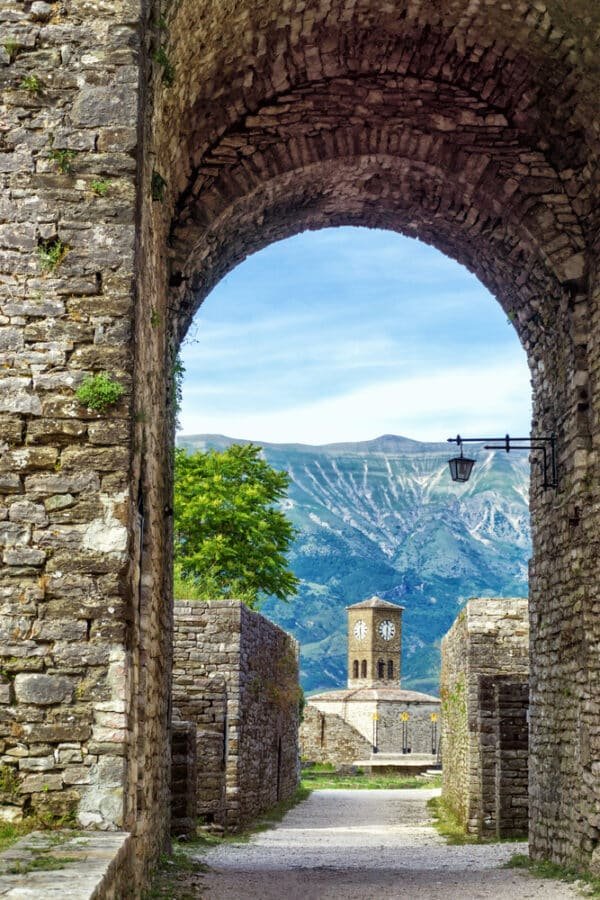
One of the unmissable items on our “What to see in Gjirokaster” guide is to visit the incredible castle, also known as Gjirokaster Fortress.
Extensively renovated and expanded during the centuries, the building features five impressive towers, an eighteenth-century clock tower built by the Turks, a cistern, and a museum. The complex overlooks the city and the underlying valley from the top of a hill, offering some of the most incredible views of the city and the whole valley.
It is also possible to visit a church, stables, and several fountains inside the complex. At the same time, a prison was built for political prisoners, which was used even during Albania’s Communist Regime until the 1970s.
Especially for kids: Inside the castle, several war weapons are exhibited; one of the most curious ones is a fantastic Fiat war tank from WWII, of which there are only three worldwide! — As well as a US Air Force Shooting Star plane. Kids will enjoy checking these during their visit.
Remember: Gjirokaster Castle is the place where, every five years, Albania’s National Folklore Festival takes place; you can check the stage located near the clock tower.
Practical details: The castle is open daily from 9 am to 6 pm in summer and from 8 am to 4 pm in winter. On Sundays, the entrance is complimentary, while on weekdays, the access tickets are about 200 Lek (1.7 euro).
Pay A Visit To The Gjirokaster Museum
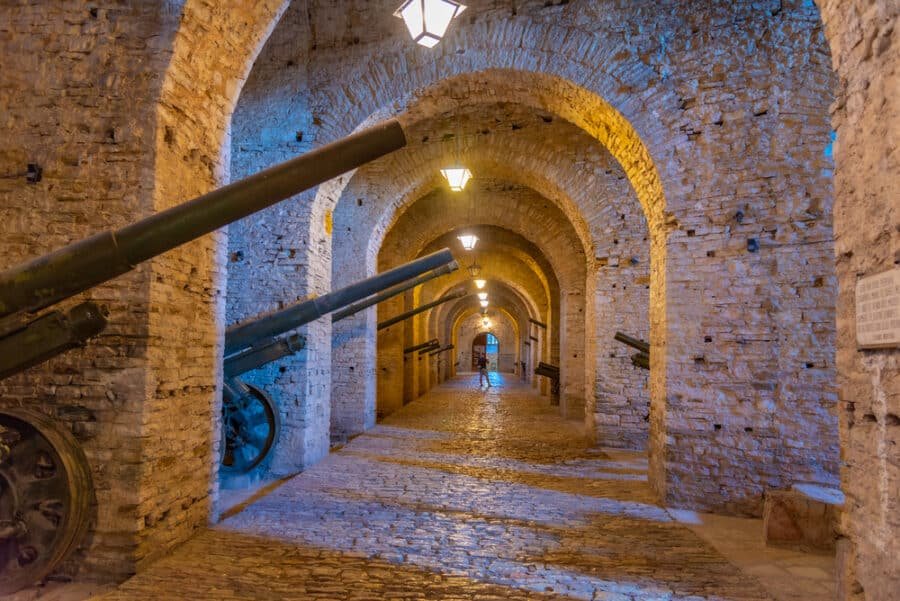
Since this fantastic museum is situated inside the castle, it is good to visit everything in a day. The museum is an excellent source to learn more about the city’s history and its inhabitants portrayed through interesting photos and captivating stories.
The visit won’t take more than 2 hours and will leave an impression. It has the same opening hours as the Castle, and the entrance ticket is also 200 Lek (1.7 euro).
Especially for kids: in the same area, older kids interested in war and history might also find the National Museum of Armaments quite appealing. It’s located on the upper floor and can add a different perspective to the castle visit.
Spend A Morning In The Old Gjirokaster Bazaar
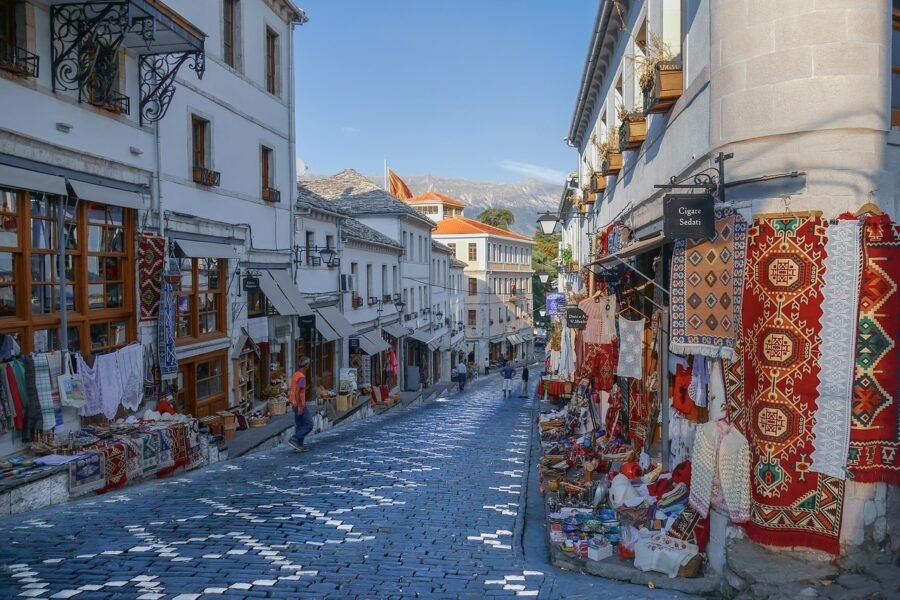
A trip to Gjirokaster will be filled with fantastic memories, one of the most vivid ones will undoubtedly be a visit to the Old Bazaar, you can’t miss it! Locally known as Qafa e Pazarit, this seventeenth-century bazaar is in the heart of the historic old town of Gjirokaster.
Stepping into the alleys of this famous market is like traveling back in time for centuries. The market follows the typical shape of the markets in the Balkans, a cross-shaped area adapting to the sloping terrain of the town. It is filled with quaint shops and two and three-story homes along the alleys.
The bazaar is the perfect place in Gjirokaster to purchase unique souvenirs from your trip and authentic Albanian gifts made with local elements.
What can you buy? Well, virtually anything, from soap and artisanal beauty products to teas, wine, local spirits, herbs, spices, honey, or even a bottle of rakija to take home with you. Rakija is among the most popular liquor in the Balkans.
Especially for kids: They will love to look at the different crafts in the bazaar, including hand-carved wood miniatures, super colorful pottery, carpets, traditional wooden toys, sweets, and more!
Check The Bazaar Mosque
While wandering the alleys of the old Gjirokaster Bazzar, why not stop a look at the picturesque Bazaar Mosque that dates back to 1757?
Also known by the official name of Memi Bey Mosque, this religious building was the only one of over thirteen mosques built during the Ottoman period. It was not torn down during the communist period or subsequently demolished due to Albania’s religious ban. The building was designed as a cultural monument by the Albanian government.
Not far from the mosque, take some time to check the two-story octagonal Islamic building constructed around the 1700s currently used as a madrasah.
Discover The Gjirokaster Fortified Stone Homes
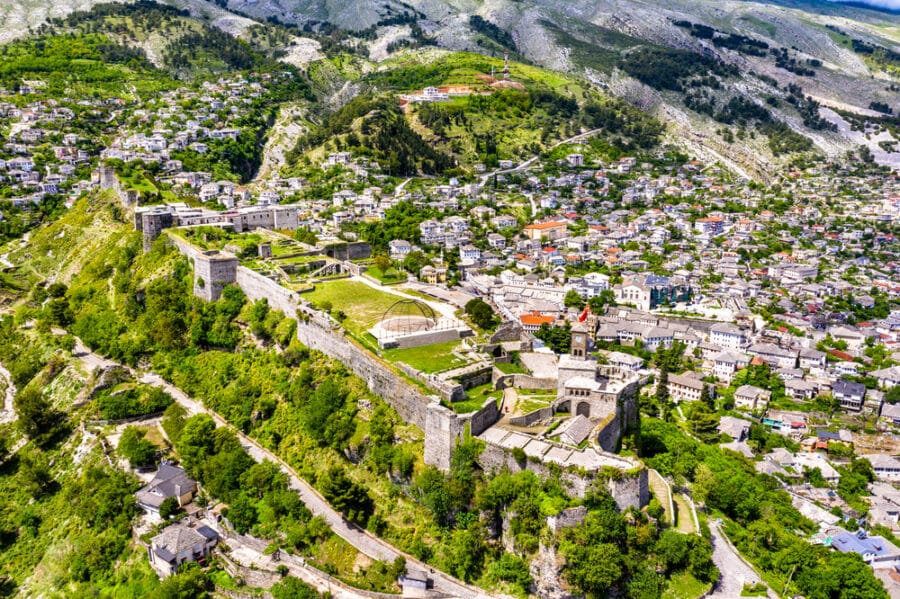
Did you know that UNESCO has designated over 500 traditional houses in towns’ cultural monuments? That’s quite impressive!
Many of these fortified homes were built in the seventeenth century (while some date from later years). They have distinctive rooftops made of local flat stone and can have up to 4 or 5 floors. These spaces house several sleeping areas, living areas, guest rooms, and even more than one hammam. These spaces seem connected by secret passages, intricate staircases, and secret doors.
Especially for kids: children will adore venturing inside one of these imposing mansions. For instance, Skenduli House, which dates from 1823, is open to the public and offers an incredible opportunity to discover spaces that will spark kids’ curiosity, including a bunker and an impressive collection of hammam baths and fireplaces. The entrance fee is 200 Lek (1.7 euro), and it is open to the public from 9 am to 7 pm.
Something interesting to know: All these fortified houses were nationalized during the communist regime, but they were later returned to their rightful owners, and it’s now possible to visit a few of them.
Learn more: If you’re interested in learning about the history of the several traditional stone houses in Gjirokaster, you can check this official Albanian site.
Visit The Ethnographic Museum
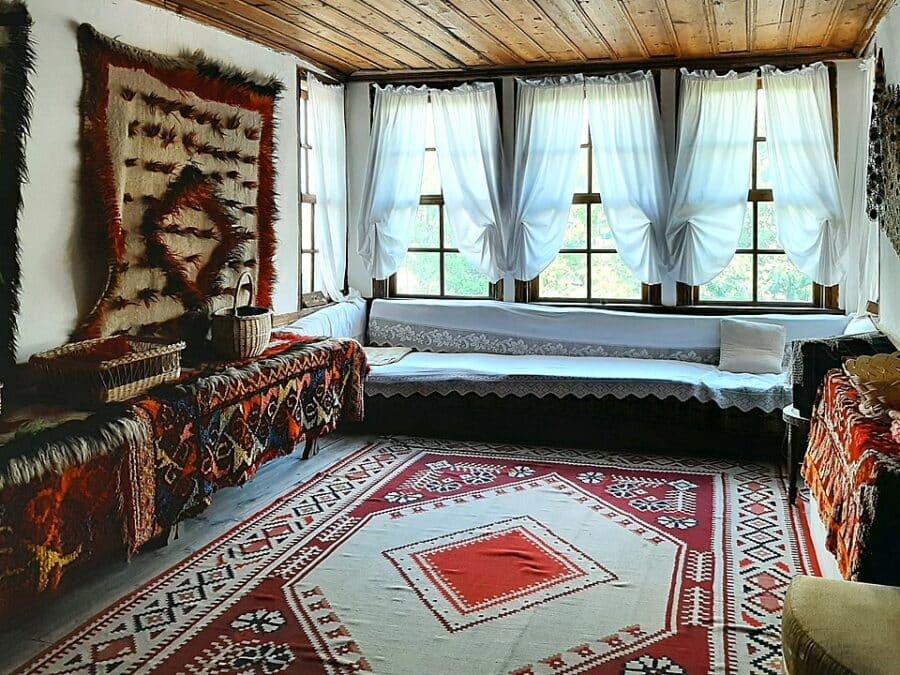
Gjirokaster is also famous for being the hometown of Enver Hoxha, tragically known for being Albania’s famous former communist dictator from 1944 to 1985. His traditional Ottoman home in the heart of the old town has been turned into a remarkable ethnographic museum that exhibits a collection of local crafts and objects of everyday use.
The museum is close to Skenduli House and can be visited from 9 am to 6 pm, while the entrance fee is 200 Lek (1.7 euro).
Check Saint Sotire Church
This Orthodox basilica, also known as the Old Metropolitan Church, was built in 1784. It is located in the Old Bazaar district and features interesting paintings and hand-carved icons.
The church, which used to be the seat of the local Orthodox bishop, suffered severe damage during the communist era. Remember that most of the icons that today decorate this church are fantastic reproductions of the originals, removed during the g communist years, which were never recovered.
The church is open daily early in the morning (from 7 to 7.30 am) and in the afternoon (from 7 to 7:30 pm); services on Sunday morning and private tours can be arranged through the Tourist Information Centre of Gjirokaster.
Explore The Aqueduct Of Ali Pasha
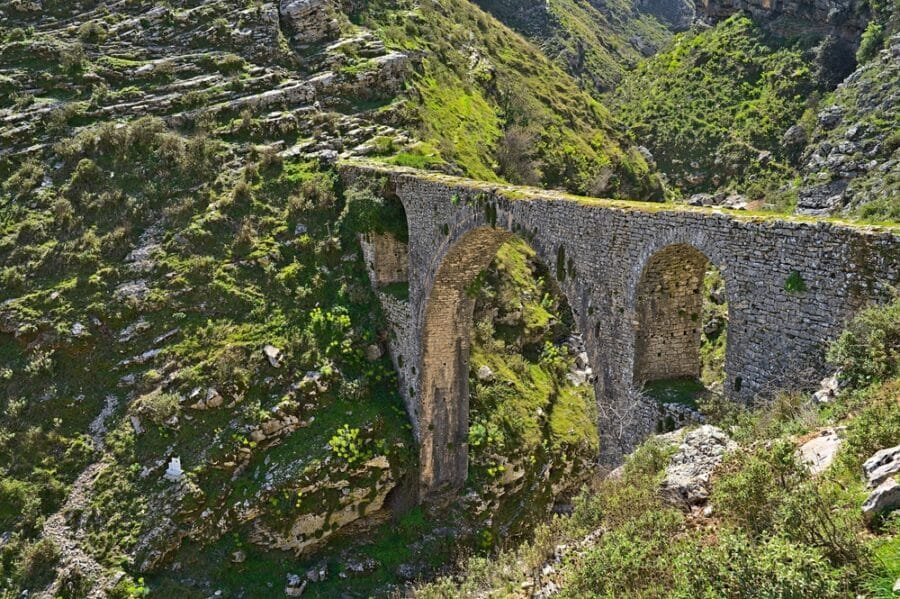
Often mistaken for a bridge and even commonly known as the Ali Pasha Bridge, this brief portion of a former huge aqueduct can be explored hiking for about 40 minutes from the castle. This is an uphill path; do wear comfy hiking shoes!
The massive construction was intended for gearing water to the cisterns of the Castle from a relatively close series of mountain springs situated about 10 kilometers from the area. However, most of its original stones were used to build the cells inside the castle, and only a tiny part of it remains, looking pretty much like a bridge that connects the sides of two hills in a narrow gorge.
Especially for kids: The aqueduct is a perfect place for photography fans and offers the possibility to take a short but pleasant trip out of the city for a quick outdoor adventure.
Walk Along Gjirokaster Secret Tunnel
Dating back to the Cold War years, this 800-meter-long tunnel is now a museum that runs right beneath the castle. The Cold War Tunnel Museum is a fascinating bunker-style construction that features numerous rooms specially designed to give shelter to members of the Communist Party during a nuclear attack.
The tunnel was built during the last years of the communist (1970s) regime and remains quite well preserved until today. The tunnel is open daily from 9 am to 6 pm, and the tour can take about 20 minutes. Interesting things to check during the visit include the over 50 different rooms and chambers, divided into rooms for government ministries or government, interrogators, party elites, places for sleeping, power generation, and water storage.
Especially for kids: Children will be amazed by the tunnel and its impressive history; in particular, they will be super curious about the decontamination room, the old Czech generator, and the air filtration room, all of which will give you an idea of the unmeasurable regime’s preparations for a nuclear attack.
Brands We Use And Trust
What To Eat In Gjirokaster

As in most of Albania, the local cuisine features evident Ottoman roots and extensive uses of local oil, herbs, spices, and sauces. These are some of the dishes you need to try during your visit.
- Pashaqofte: this is a delicious soup with small and fragrant meatballs containing a good quantity of local herbs.
- Sarma: also known as japrak, these are the traditional stuffed vine leaves from the Balkan area, often stuffed with rice and herbs, especially mint.
- Qifqi: everyone (including kids, loves these unique rice balls cooked inside a hollow frying pan.
- Qahi: small but tasty homemade spinach pie. Regarding sweets and desserts, don’t overlook the traditional Turkish baklava and a local sweet called Oshaf, which is made with sheep milk and cinnamon.
You should also try the local cheeses made from goat, sheep, or even cow milk, which is famous all over the country. Djathe i bardhe is a soft white cheese, similar to Greek feta; if you prefer more complex and savory cheese varieties, the local Kaçkavallry.
Where To Eat In Gjirokaster
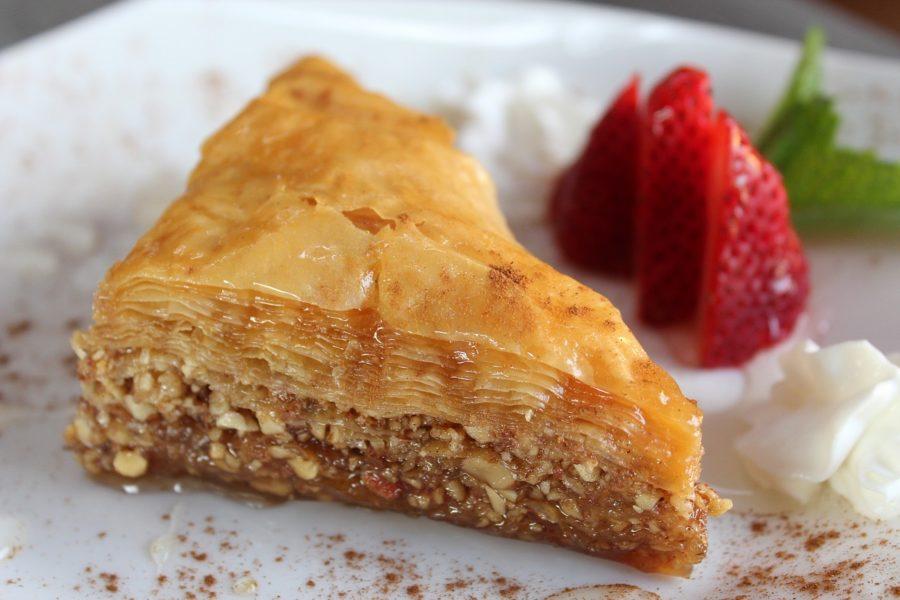
There are many restaurants, small taverns, and cafeterias to learn more about Gjirokaster’s food traditions; these are some of the best-rated ones.
Casa Flora And Linda
Are you looking for an affordable yet delicious place in Gjirokaster? Here, you will find home-cooked and inexpensive dishes made by a mom and her daughter just around the corner from one of the main streets in the Old Town. It’s a perfect stop after an intense morning of sightseeing.
Location: Jsmail Kadare Rruga
Kodra
A restaurant located in a panoramic point of Gjirokaster, perfect for a romantic dinner or an inspiring view of the town. It serves dishes of the local tradition, and the staff is genuinely welcoming.
Location: Janari Rruga e Zejtareve
Gjoka
It is a small restaurant with just a couple of tables inside, run by a couple who will cook fast and tasty everyday dishes. Nothing fancy, affordable, and convenient
Location: Irigjin Zenebishti
Kerculla
Despite the somewhat tiring hike you must take to get to this restaurant, you will find some of the best food in Gjirokaster, plus spectacular views and excellent service.
Location: Lagja Palorto
Day Trips From Gjirokaster
The Blue Eye Spring (Syri i Kaltër)
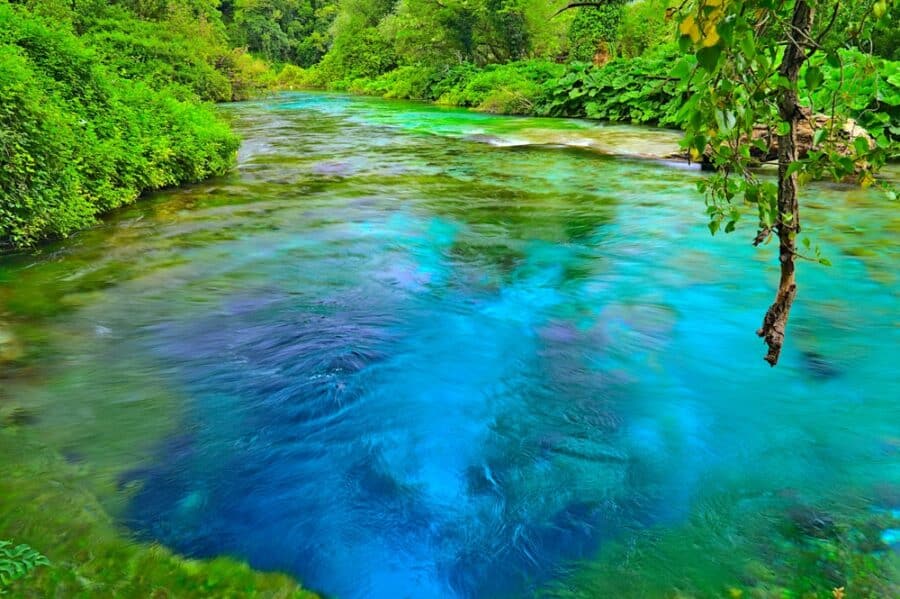
About an hour’s drive from Gjirokaster, the Blue Eye is a breathtaking natural water spring known for its deep, vibrant blue color surrounded by a lush forest. It’s a perfect spot for nature lovers and photographers.
Butrint National Park
Approximately 1.5 hours away by car, this UNESCO World Heritage site is an ancient Greek and later Roman city with well-preserved ruins set in a beautiful natural setting. It offers a unique combination of archaeology, history, and nature.
Saranda
Just about 1.5 hours from Gjirokaster, Saranda is a beautiful coastal town facing the island of Corfu. Known for its stunning beaches, seaside promenades, and vibrant nightlife, it’s a great place to enjoy the Albanian Riviera.
Ksamil
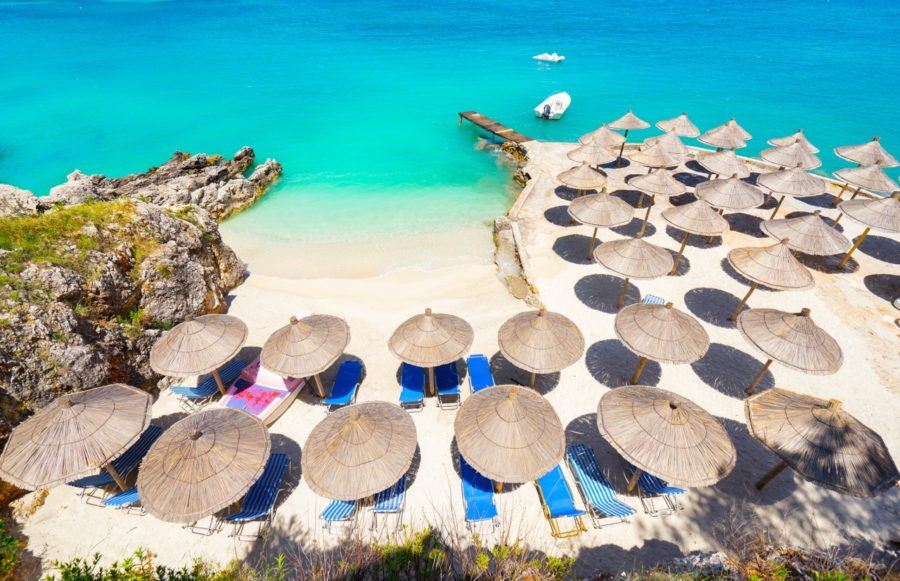
Located a bit further from Saranda (about 20 20-minute drive), Ksamil is famous for its beautiful beaches and crystal-clear waters, offering excellent opportunities for swimming, sunbathing, and water sports. It’s around 2 hours from Gjirokaster.
Labëria Region
For a taste of rugged Albanian landscapes and traditional culture, a trip into the Labëria region is highly recommended. Explore traditional villages, enjoy the scenic mountainous terrain, and perhaps visit the Viroi Natural Park in Gjirokaster County.
Zagori
This area is a bit further afield but offers stunning mountain scenery, traditional stone bridges, and the chance to experience the tranquil rural life of Albania’s interior. It’s ideal for hiking and exploring traditional Albanian architecture.
Permet
About 1.5 hours from Gjirokaster, Permet is known for its natural beauty, including thermal waters, the Langarica Canyon, and hospitality. It’s also a good place to taste traditional Albanian food and wine.
Ancient City of Antigonea
Just a short drive from Gjirokaster, the archaeological site of Antigonea offers a glimpse into the ancient past of the region. Founded by King Pyrrhus of Epirus in the 3rd century BC, it provides fascinating ruins set against a scenic backdrop.
Where To Stay In Gjirokaster
Affordable Accommodation In Gjirokaster
Check Stone City Hostel if you’re traveling around Albania on a budget. Located in a picturesque and traditional building, the hostel features a bar, a shared lounge, a terrace, and free WiFi. There’s also luggage storage space and a shared kitchen, and they organize tours for guests. There are continental and buffet breakfast options each morning. Check out the hotel & prices here ↳
Family-Friendly Accommodation
We recommend staying at Argjiro Traditional for families with kids. This is an elegant and beautiful hotel with a magnificent garden, a shared lounge, a sun terrace, and comfy family rooms. Some are equipped with a balcony, and some have garden views. The accommodation also offers a continental or American breakfast. Check out the hotel & prices here ↳
Lux Accommodation In Gjirokaster
Look at Kerculla Resort if you want to enjoy a swimming pool with views of the stunning Gjirokaster landscape. The hotel features a barbecue and a children’s playground as well. They serve an exceptional breakfast daily, while free private parking is available on-site. Check out the hotel & prices here ↳
Move This Adventure To Your Inbox & Get An Instant Freebie

No spam. Unsubscribe at any time.
Where Is Gjirokaster In Albania – How To Get To Gjirokaster
Located between the lowlands of western Albania and the highlands of the interior, the city is located southeast of the Adriatic port of Vlore, overlooking the Valley of the Drin River and the long ridge of the Gjere Mountains.
This location gives the city typical hot Mediterranean summers while receiving heavy rainfall all year round.
Gjirokaster is located about 230 kilometers from Tirana, the capital of Albania, and it can be easily reached by car (the trip lasts about 3 hours).
There are also buses connecting Gjirokaster to Tirana, the beautiful seaside town of Saranda, and the closest major city (about 55 kilometers away), and driving from Saranda to Gjirokaster takes about 1.5 hours.
You can also travel to Gjirokaster by bus from Saranda. Bus connections run hourly, and the ticket is 400 Lek (about 3.5 euro). Instead, getting there from Berat takes about 3 hours by bus (at least three daily). Tickets cost approximately 900 Lek.
If you’re traveling from Greece, Gjirokaster is quite close to the northern Greek city of Ioannina; daily buses to Gjirokaster depart the bus station at 1 pm.
The ticket is 8 euros, and the trip lasts about 3 hours. If you prefer to drive from Ioannina, it will take you just a bit more than an hour to reach Gjirokaster.
Get Ready For Your Buses To Gjirokaster
Before you come to visit, read the book “Chronicle in Stone,” which is a novel by the Albanian writer Ismail Kadare. The book is set in the author’s hometown of Gjirokaster, Albania, and provides a vivid portrayal of the city during World War II. Through the eyes of a young boy, the novel explores the impact of war on the city and its inhabitants, intertwining personal experiences with historical events.
Gjirokaster, with its distinctive Ottoman-era stone houses and cobbled streets, is not only the backdrop for the story but also a central character in its own right, embodying the history, culture, and struggles of the Albanian people. Kadare’s work captures the essence of Gjirokaster’s unique architectural and cultural heritage, making “Chronicle in Stone” a significant literary contribution to Albanian culture and history.
The novel is celebrated for its lyrical language, magical realism, and deep insight into the human condition during times of turmoil. It’s an important work in Ismail Kadare’s oeuvre. It offers readers a glimpse into the complexities of Albanian life and history through the lens of one of its most acclaimed writers.
- 21 Ideas On Where To Go In Albania
- Things To Do, Eat, And More Along The Albanian Riviera
- The Must-See Sights In Albania With Kids
- Guide To Albania’s National Parks
- Things To Do In Albania
- Explore The City Of Tirana, Albania
- Hotels Along The Albanian Riviera
- Things To Do In Saranda
- Rent A Car In Saranda
- How To Get From Tirana To Durres
- Our Top Picks For Albania Accommodation
- Berat Or Gjirokaster – Comparison Guide

